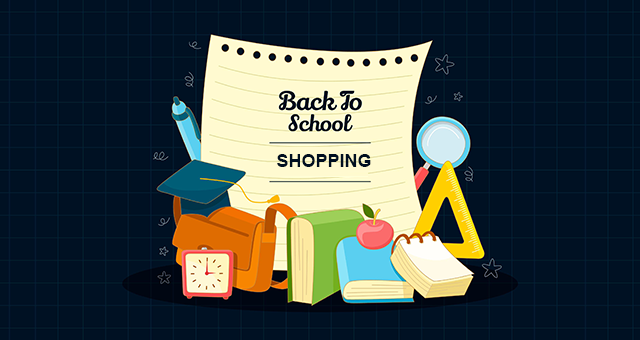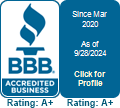
Budget-Savvy Strategies for Back-to-School Shopping
Many parents feel the financial burden of back-to-school shopping as the new school year draws near. The National Retail Federation estimates that in 2024, families with children enrolled in elementary, middle, and high school would spend an average of $890 on back-to-school supplies, a considerable rise over prior years. Expenses can mount and burden your budget, from supplies and clothing to tech devices and extracurricular gear. Here are some practical tips to help you get through this yearly tradition without going over budget or disappointing your kids.
1. Make a Comprehensive List and Prioritize Your Needs
List all the supplies your children will need for the upcoming school year. Sort the list according to apparel, necessities, and additional purchases like electronics or fees for extracurricular activities. Then check out what you already have at home, and base your list on what is essential. You risk falling for sales that do not match your supply demands if you do not have a list. It can quickly lead to clutter and waste of time and money. Your shopping trip will be pleasurable and financially beneficial if you stick to your list.
2. Create a Realistic and Well Defined Budget
You can make a budget when you have determined what you need and prioritized your needs. Determine how much money you can spend on one-time school supplies and set aside a reasonable amount. All expected costs, from an expensive laptop to a small eraser, should be included in this budget. You should also include ongoing educational costs like extracurricular activity fees. Having a reasonable and well-defined budget helps you stay on track and avoid overspending.
3. Examine What You Can Use From The Previous Year
At the end of the school year, kids take their used and unused supplies home. Numerous items, including backpacks, binders, folders, and pencils, are reusable. Also, look through the children’s clothes and see if some of their previous school attire fits well. But don’t skimp on this aspect either. You would not like to send your young kids to school in poorly fitting clothes.
4. Tax-Free Weekends
Tax-free weekends and holidays are excellent times to stock up on school supplies and save money on essentials for the classroom. Nineteen states are offering tax-free and subsidized back-to-school shopping holidays this year.
Most of these states do not impose taxes on clothing or school supplies. Some others provide tax-free savings on various products, including educational materials, electronic gadgets, books for children, and art supplies. To find out what qualifies and to obtain a comprehensive list of tax-free weekends and holidays by state, check out the Federation of Tax Administration website. You can save more money if you plan your shopping around these occasions.
5. Look for Discounts and Sales
Take advantage of numerous deals and discounts retailers provide throughout the back-to-school season. School supplies, clothing, and electronics are all on sale at several outlets. To locate the best offers, look for fliers, sign up for mailing lists, follow retailers on social media, or use price comparison websites. Getting a head start on your shopping can also help you uncover deals before they sell out. You may save significant money on back-to-school purchases if you shop early and watch out for sales.
6. Utilize Cashback and Coupon Apps.
Using coupons is a tried-and-true method of saving money. Look for coupons through websites, periodicals, newspapers, and other print or digital media. Make sure to see if you can stack your savings because many merchants also accept coupons from rival businesses.
Using cashback applications, which let you get paid back for your purchases, is an additional choice. You only have to scan your receipts to get cash or gift cards when you reach a specific amount. These little savings add up quickly and can assist in lowering your total cost of returning to school.
7. Buy In Bulk and Split Costs
Purchasing supplies like notebooks, pens, and other products in bulk can be a more economical option. You might also want to get together with the parents of your child’s classmates to purchase specific supplies. Purchasing in bulk and splitting the expenses could lead to a lower cost per unit. This method guarantees you have enough materials for the academic year while saving money.
8. Look for Second Hand Products
Another excellent method to minimize costs is to shop online for old textbooks and clothing. Numerous websites, such as Kidizen and ThredUp, are available to purchase second-hand clothing. Affordable and gently worn apparel can be found at thrift shops like Goodwill and Plato’s Closet.
Textbooks are one of the costs associated with attending college. A college textbook typically costs $105.37, according to estimates from the Education Data Initiative. Browse your neighborhood used bookstores or Facebook Marketplace for less expensive options. Used books are also sometimes available at university bookshops at a discount. Additionally, used textbooks are available for rent or sale on Amazon, and students can return or sell their books when the semester is over.
9. Purchase Generic Brands
Consider choosing store or generic goods over name brands when buying necessities like school supplies. Good quality does not always have to cost a lot; in fact, many generic products are on par with or better than their branded equivalents. Look for store-brand products comparable to more expensive brands in features, warranties, and durability. Generic items allow you to reduce your back-to-school spending.
10. Spread Out Your Shopping for School Supplies
If you have a limited budget, spread out your purchases over a few months. It can be convenient for you to purchase the necessary supplies—pencils, notebooks, highlighters, binders, etc.—all at once. Some items, like seasonal clothing or other tech gadgets, may not be immediately necessary. Delay these purchases until later in the year when you have more room in your budget or when prices drop.
11. Plan for Extracurricular Activities in Advance
It is crucial to budget extracurricular activities in addition to school-related costs. Sports, music courses, and clubs are examples of activities that frequently call for extra costs or supplies. Examine the expenses related to every task and factor them into your spending plan. Determine which activity your child can participate in now and which can be delayed or skipped. If you prepare beforehand, you may assign the required dollars without unduly straining your budget.


